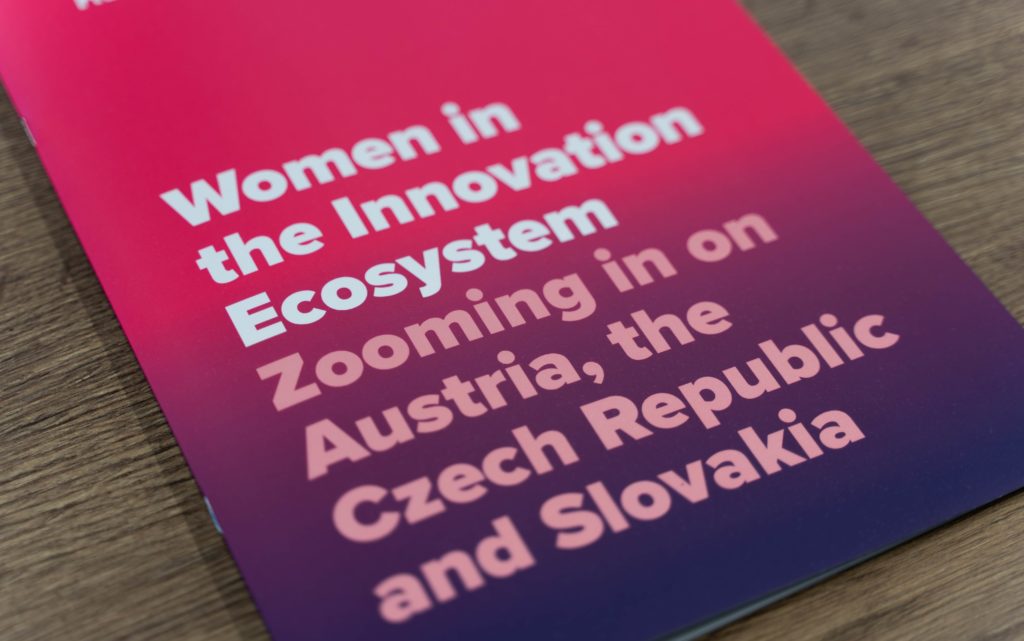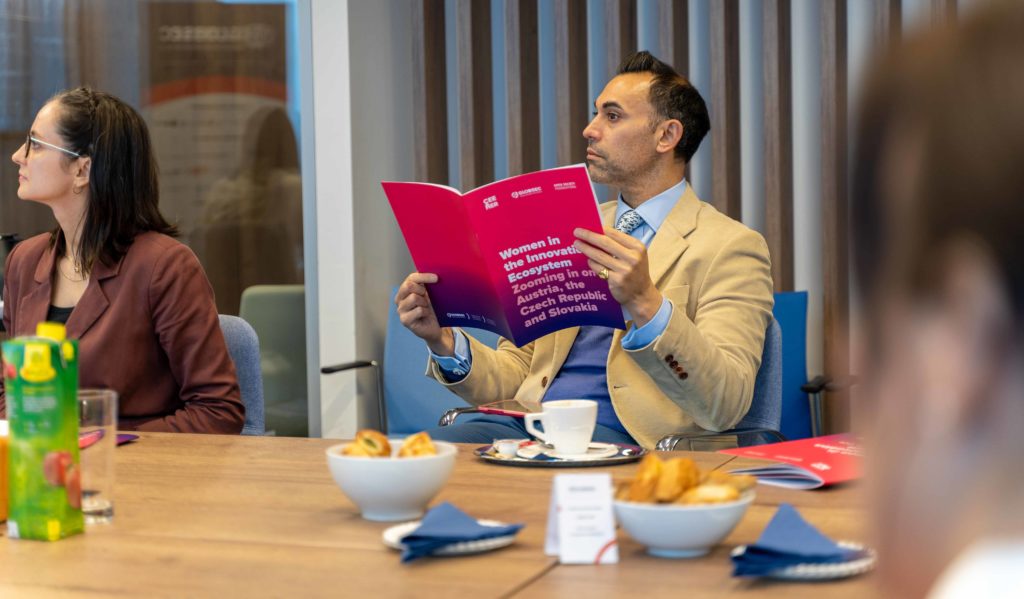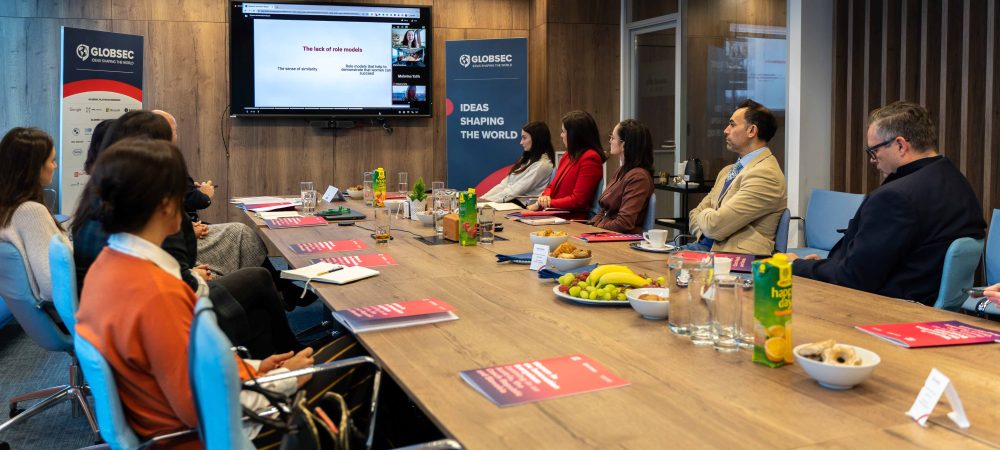While women in Austria, the Czech Republic, and Slovakia participate actively in political, economic, and social pursuits, gender equality has not yet been achieved. Even though women are important contributors to the innovation ecosystem, they are underrepresented across all segments in Central and Eastern Europe (CEE) and Austria despite the high demand for talent. The CEE region in 2020, for instance, saw only 1% of funding go to women-founded start-ups and less than 1% of capital managed by all-women general partner (GPs) teams. These are just some of the worrying data extracted from our Report on Women in the Innovation Ecosystem in the region, authored by Lucia Cerchlan and Lucia Rybnikarova.
The Women in the Innovation Ecosystem Report provides an overview of the current state of affairs and challenges for women in Austria, the Czech Republic and Slovakia, while putting forward policy recommendations to various stakeholders directed at improving gender equality and women’s inclusion. The Report was launched on 16th December 2022 as part of the CEE Her Initiative and in cooperation with the Danube Tech Valley Initiative, with a hybrid event in the presence of various stakeholders, supporters, and partners. During the discussion, Lucia Cerchlan and Jana Brodani shared the results of the Report and a series of challenges and solutions to address in the region in order to boost female inclusion in the innovation ecosystem.

Speakers:
- Lucia Cerchian, Co-Founder of Lumus Investment Collective
- Jana Novohradska, Representative of the Slovak Republic at UNESCO and consultant for the Slovak Ministry of Investment, Regional Development and Informatization
Led by: John Barter, Senior Vice President of GLOBSEC
During the presentation and the ensuing discussions, a number of key issues and possible solutions stood out. It is evident from the gathered data that women’s participation in the innovation ecosystem in the examined region is not progressing. Despite Austria’s achievements and its position as the best performer on the gender equality and inclusion metrics, even Austria is still struggling to achieve broad gender parity. For the Czech Republic and Slovakia, the results are even more stark. The top three challenges preventing women from fully accessing and staying in the ecosystem, as identified are:
- The difficulties encountered by women in wanting to be taken seriously, both during the interview process and in performance evaluation, where women often have to make an extra effort to convince others of their qualifications, talents and achievements.
- The gender pay gap still affecting women in the ecosystem, ranging between 18 and 20% and ranking as the highest pay gap in Europe.
- The lack of female role models preventing women from finding the right motivation to access and progress in the ecosystem.

With regards to the lack of female role models and lack of mentorship in the innovation ecosystem, focus was placed for the need of more stories to which women can relate. A de-centralisation of the “role model” concept seemed to be a focal solution, as women tend to identify more easily with other women of similar backgrounds and/or their immediate surroundings, rather than to aspirational models. Having said that, there is also need for more energetic action on the part of women leaders to support other women, as at times female leaders would rather talk about their expertise than to become an actively involved role model for young professionals. Investing in leadership and mentorship programs is a first step after education in narrowing the gender gap.
Another crucial challenge for women in the innovation ecosystem in the examined countries is limited career progression after a certain age, especially in the case of mothers. Although there is structural discrimination in the ecosystem, particularly in senior levels, part of this parity gap is exacerbated by the nature of certain jobs in start-ups needing constant presence (which mothers often cannot provide), as well as women’s influenced or natural preference to choose roles of support rather than leadership ones, where the opportunity of advancement is reduced. In order to solve this, the presenters and participants of the debate highlighted a number of solutions, including the improvement of the proximity and costs of childcare and most importantly, the availability of training programs during and after maternity, to update mothers on technological knowledge missed during those maternity months.
During the discussion, the question of quotas arose. Some consensus exists on the utility of quotas mostly due to people’s inherent biases, which some argued can only be balanced out with the setting of quotas. Having women as participants in the ecosystem can not only bring new perspectives to the table, increase creativity in innovation and solutions but it also increases the chances of business success. Data on the success of female businesses and the reduced likelihood of failure often is missing but it can be an important benchmark for decisions in the innovation ecosystem as well as contributor to eliminating societal negative perceptions of women in the ecosystem. Moreover, having women on boards, in general, but especially in investment groups is essential as women do tend to look for other women to invest in.

Finally, data and data granularity is often missing in the region. Collection is crucial to the identification of specific trends and challenges, and thus the identification of solutions to fight gender disparity in the innovation ecosystem. With solid data evidence, new solutions, tailored to the ecosystem, can be credibly presented to relevant stakeholders triggering systematic changes.
You can read the report here:

